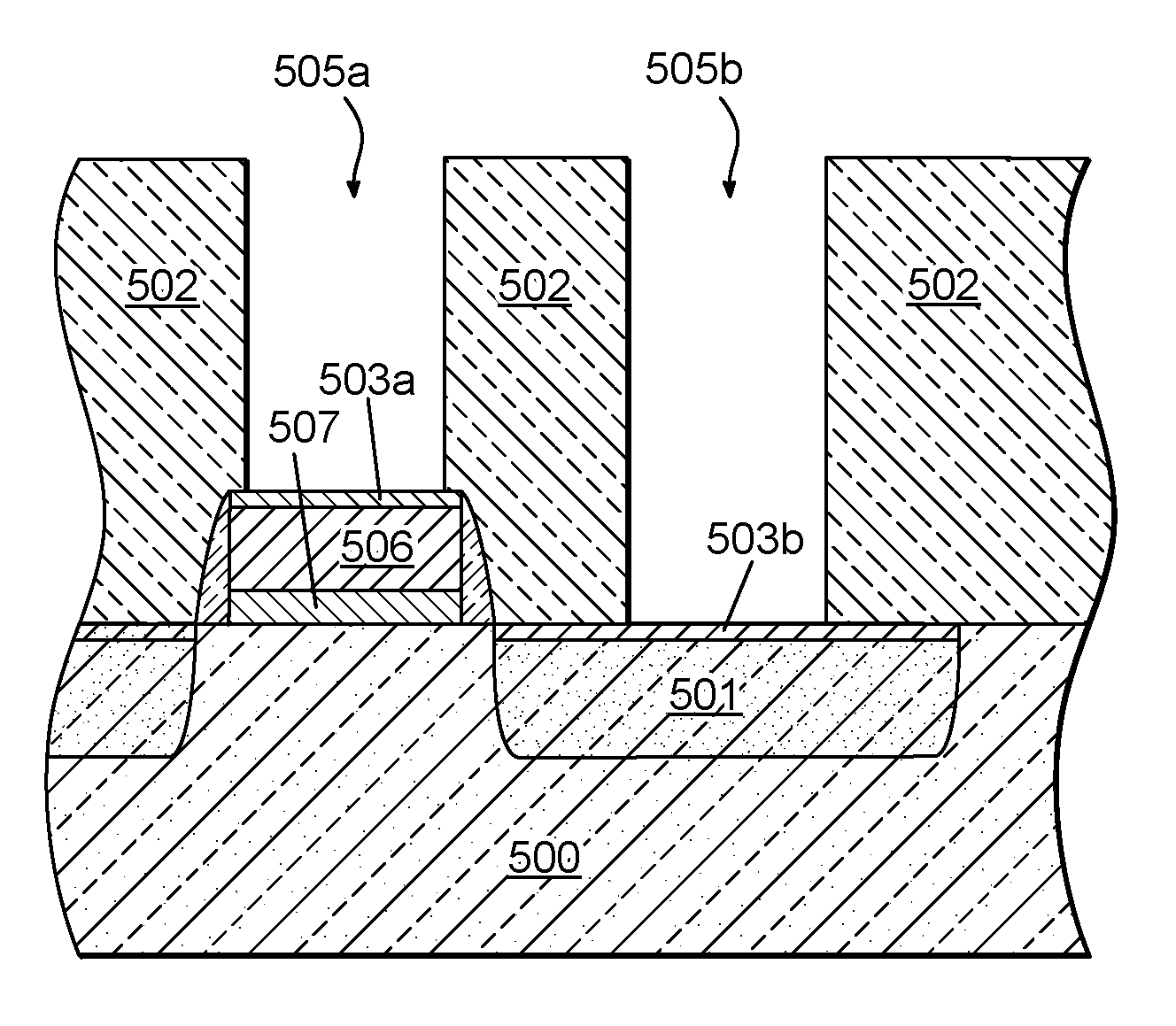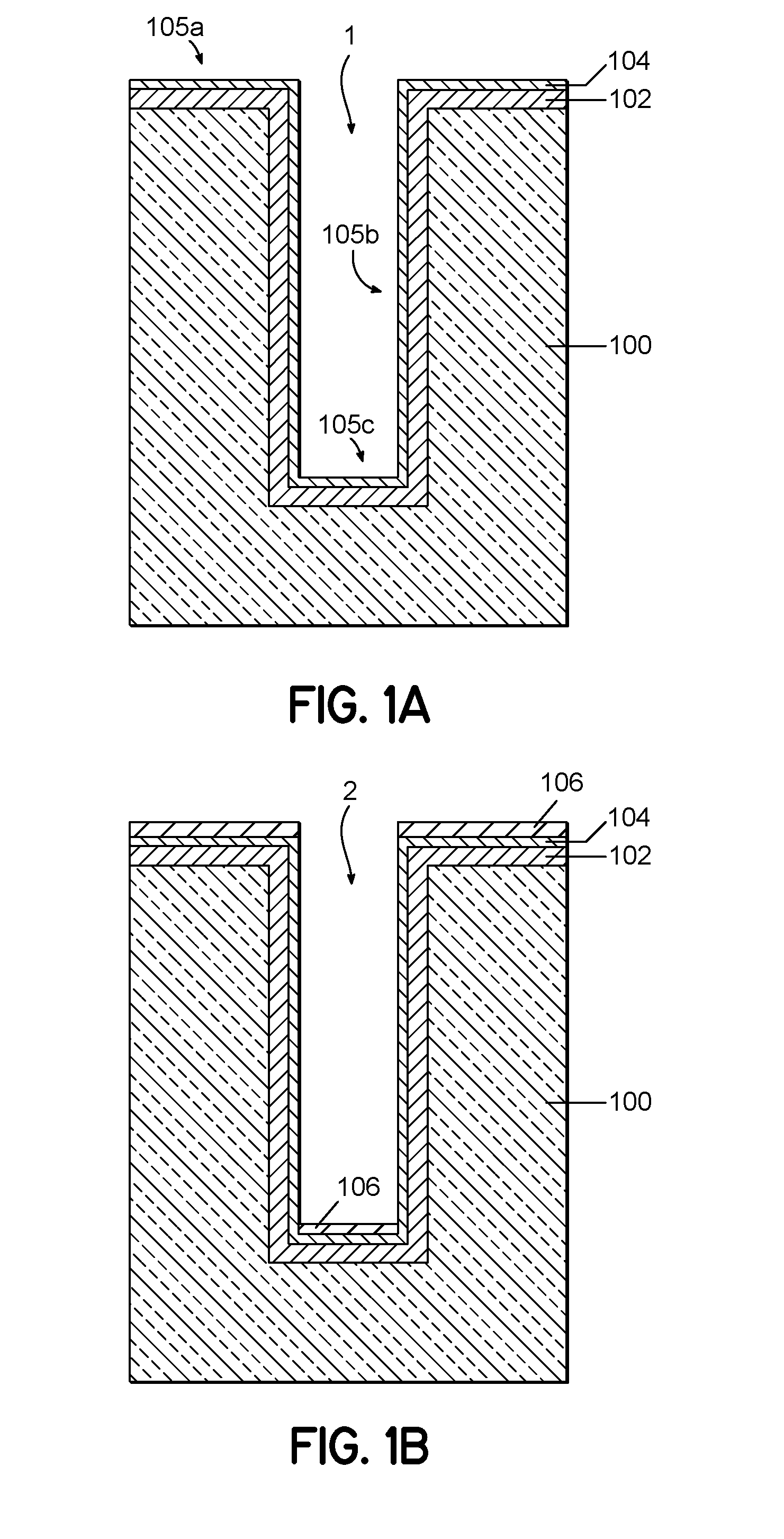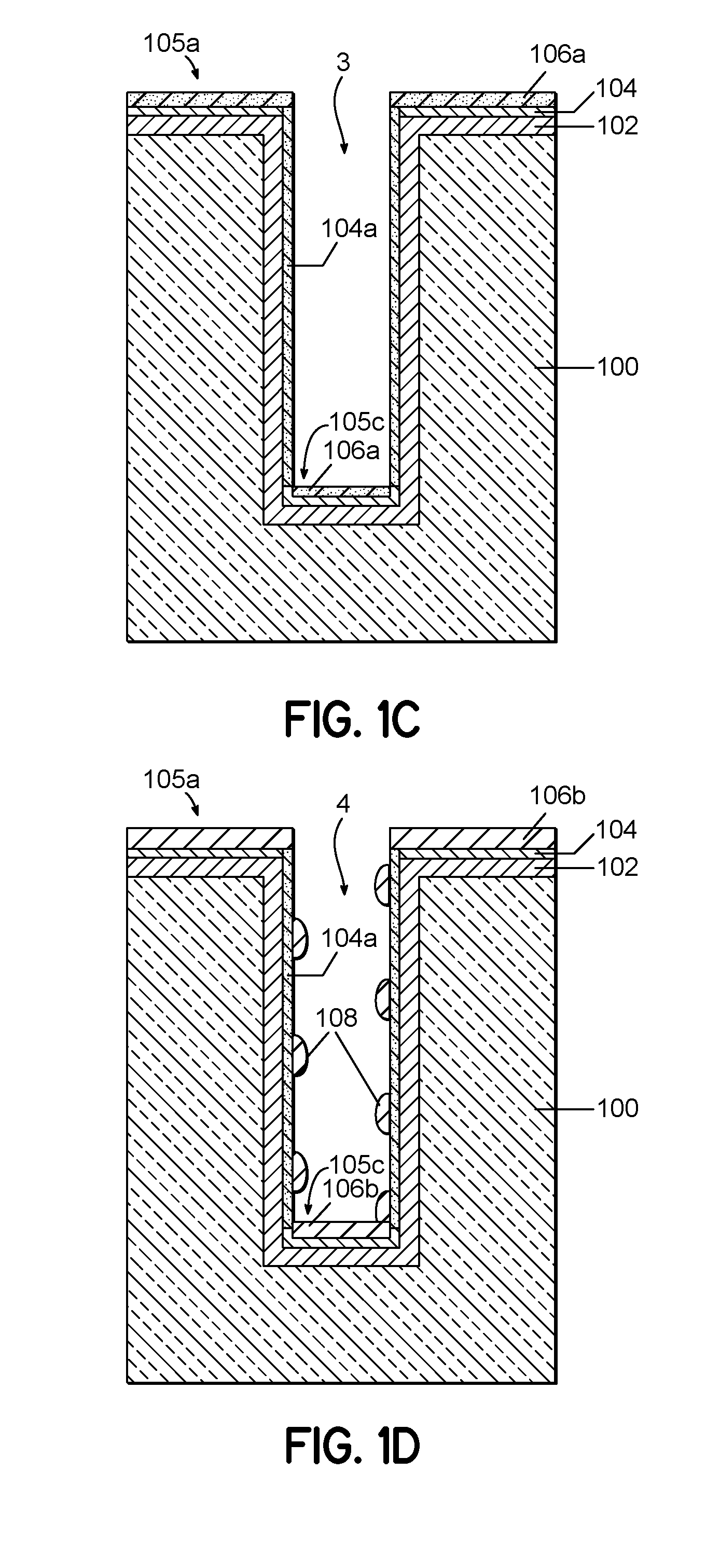Void-free copper filling of recessed features for semiconductor devices
a technology of semiconductor devices and recessed features, applied in semiconductor/solid-state device manufacturing, basic electric elements, electric devices, etc., can solve the problems of voids in bulk metal filling of recessed features, recessed features are becoming so small, and open and extruded metal lines
- Summary
- Abstract
- Description
- Claims
- Application Information
AI Technical Summary
Benefits of technology
Problems solved by technology
Method used
Image
Examples
Embodiment Construction
[0018]Method for void-free Cu filling of recessed features in semiconductor devices is disclosed in several embodiments. The current inventors have studied different process variations and heat-treating processes that affect Cu voiding in recessed features containing a barrier film, a conformal Ru metal film on the barrier film, and bulk Cu metal filling the recessed feature. Cu voiding is a problem that is encountered due to oxidation of the Ru metal film during air exposure of about 2 hours or more prior to bulk Cu metal filling using a Cu plating process. Such air exposure is common in device manufacturing environments. Embodiments of the invention enable device manufacturers to integrate Ru metal films with void-free Cu filling of the recessed features. The Ru metal films can be deposited with excellent conformality and can provide greatly improved bulk Cu metal filling of high-aspect ratio recessed features.
[0019]One skilled in the relevant art will recognize that the various e...
PUM
| Property | Measurement | Unit |
|---|---|---|
| temperature | aaaaa | aaaaa |
| temperature | aaaaa | aaaaa |
| width | aaaaa | aaaaa |
Abstract
Description
Claims
Application Information
 Login to View More
Login to View More - R&D
- Intellectual Property
- Life Sciences
- Materials
- Tech Scout
- Unparalleled Data Quality
- Higher Quality Content
- 60% Fewer Hallucinations
Browse by: Latest US Patents, China's latest patents, Technical Efficacy Thesaurus, Application Domain, Technology Topic, Popular Technical Reports.
© 2025 PatSnap. All rights reserved.Legal|Privacy policy|Modern Slavery Act Transparency Statement|Sitemap|About US| Contact US: help@patsnap.com



